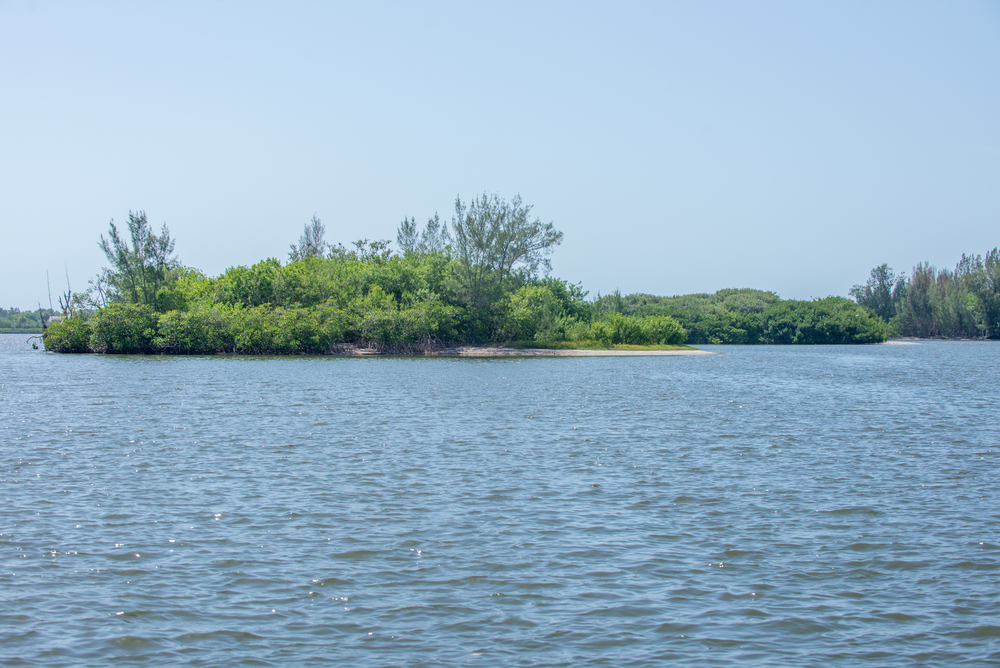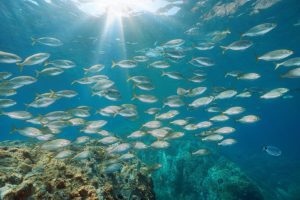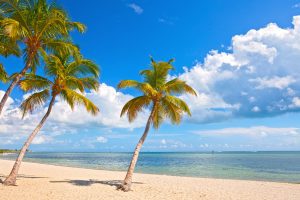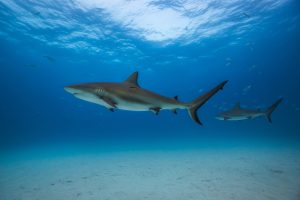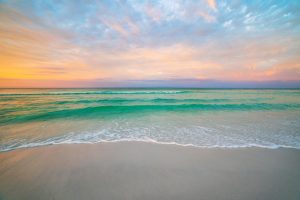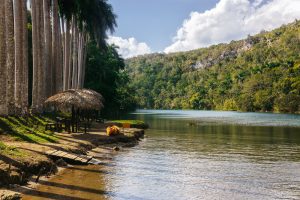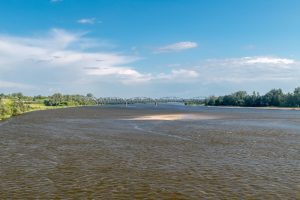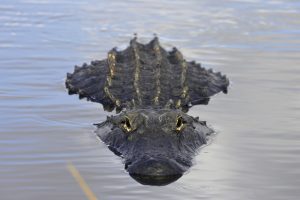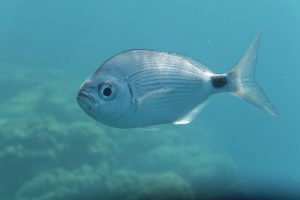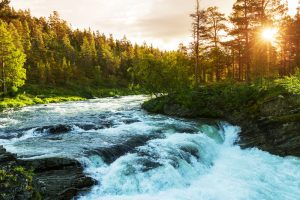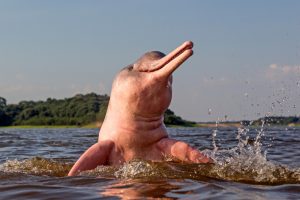The Indian River is a saltwater inlet and a section of an extensive lagoon system in Florida, along the Atlantic Ocean. Freshwater flows from nearby rivers, creeks, and canals and mixes with saltwater from the ocean.
This combination results in the brackish waters of the Indian River Lagoon, meaning the system is a mixture of salt and freshwaters.
As a result, alligators exist in the Indian River, primarily residing in the lower sections containing the fresh waters.
These species cannot live in saline environments, and thus, you cannot find them in the upper areas featuring saltwater from the Atlantic.
Although it is rare to find alligators on the saline beachside, an individual may occasionally wander a bit far from home and land near the ocean and intra-coastal spots.
Table of Contents
What is the Indian River Lagoon?
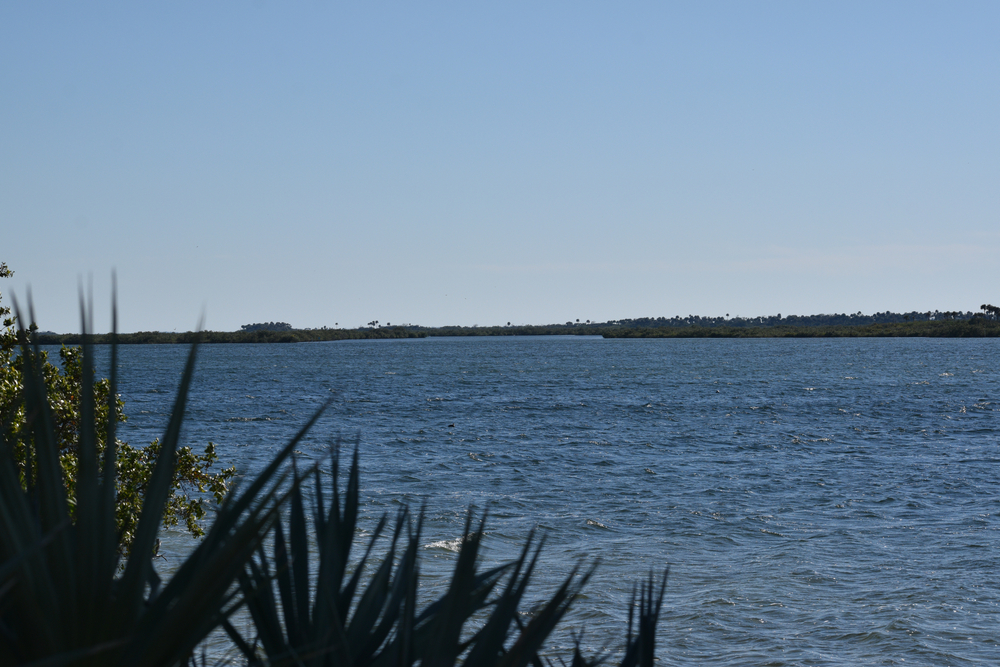
The Indian River Lagoon on Florida’s Atlantic Coast consists of three lagoons, including the Banana River, the Mosquito Lagoon, and the Indian River.
It is among the most bio-diverse estuaries in the Northern Hemisphere, with over 4,300 plant and animal species residing in it. The Indian River is a 121-mile-long brackish lagoon and forms part of the Atlantic Intracoastal Waterway.
Many locals and visitors may not realize that the Indian River is not an actual river.
The Indian River is a saltwater inlet that forms an extensive lagoon system with approximately 240,000 years of history. The region features a narrow strip of barrier islands separating the lagoon from the adjacent Atlantic Ocean.
This geography leads to the inlets letting seawater flow in multiple places, mixing with the fresh water running from the surrounding rivers, canals, and creeks.
Consequently, you get a mix of fresh and saltwater environments and the accompanying variety of wildlife.
Notably, bridges occasionally impede the flow of the red algae on the Indian River during certain seasons of the year, leading to a hydrogen sulfide odor in the area.
When is the best time to see alligators at the Indian River?
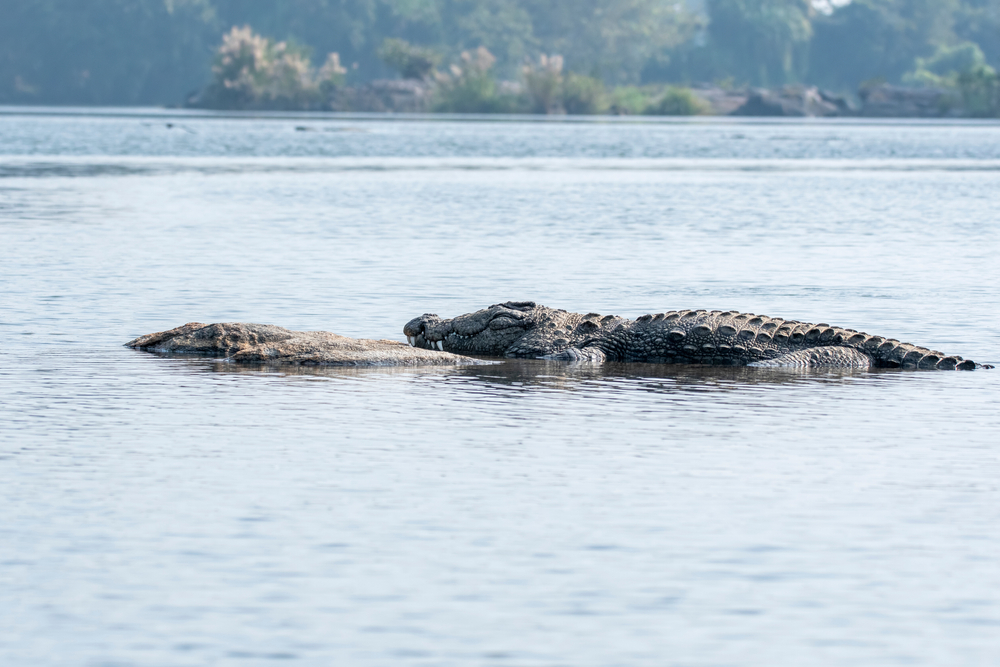
The best time to see alligators during your visit to the Indian River in Florida is between May to November. This period marks the rainy season when the animals become more active because of the prime environmental conditions.
Although alligators prefer the hotter and wetter times of the calendar, you can still spot them throughout the year.
You can view them before the rainy season begins when they come out in search of mates. As a result, the following rainy season also presents a prime time to see alligator babies.
Aside from these, you can find these reptiles sunning on land when visiting the Florida Coast during the hotter months.
Generally, alligators feed during the night or dusk hours and do not journey far for a meal. They also eat whatever is available to them, featuring mostly small mammals, birds, and fish.
Alligators have powerful jaws and teeth that easily crush their prey while producing a loud snapping noise. You want to be quick to look at every sound you hear to see the alligator before it heads back underwater after feeding.
What are some fun facts about alligators?
American alligators have some quirks that make them an interesting species to see. Here are some fun facts about these sizeable reptiles:
1. They are ecosystem creators
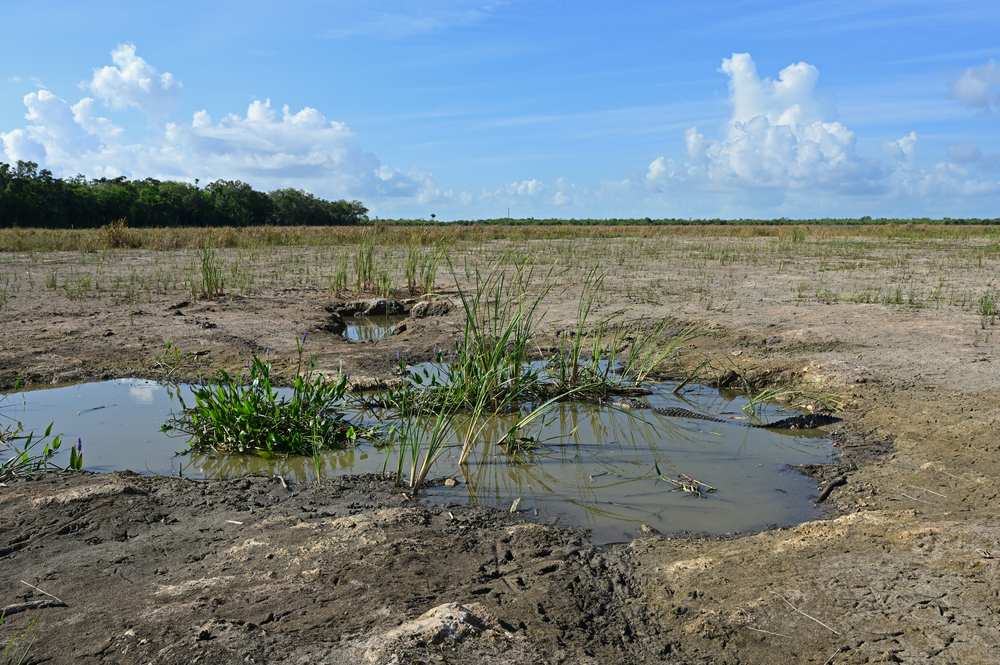
Alligators create small ponds called alligator holes that play an essential role in wetland ecosystems. These holes retain water during the dry season, offering habitats for other animals.
They also provide aquatic refuge for the alligators and other aquatic organisms in the ecosystem.
These holes present foraging sites for turtles, wading birds, and snakes. Other reptiles can also utilize them as nest sites for future reptile populations.
2. The temperature determines their sex
The temperature at which alligator eggs develop determines their sex. Eggs exposed to conditions at 86°F become females, while those at temperatures exceeding 93°F become males.
Intermediate temperatures result in both sexes.
3. Alligators are creative
Alligators observe the rule of survival of the fittest by integrating creative skills into their hunting techniques. They can skillfully utilize tools, including balancing branches and sticks on their heads to attract birds seeking nesting material.
4. They continue growing throughout their lifetimes
On average, male alligators can measure anywhere between 8 and 10 ft long, with the females being slightly smaller. Despite their huge size, these species continue to grow throughout their lifespan.
As a result, you can find very old males of quite large sizes, reaching up to 15 ft long and weighing more than 1,000 pounds.
5. Alligators are toothy
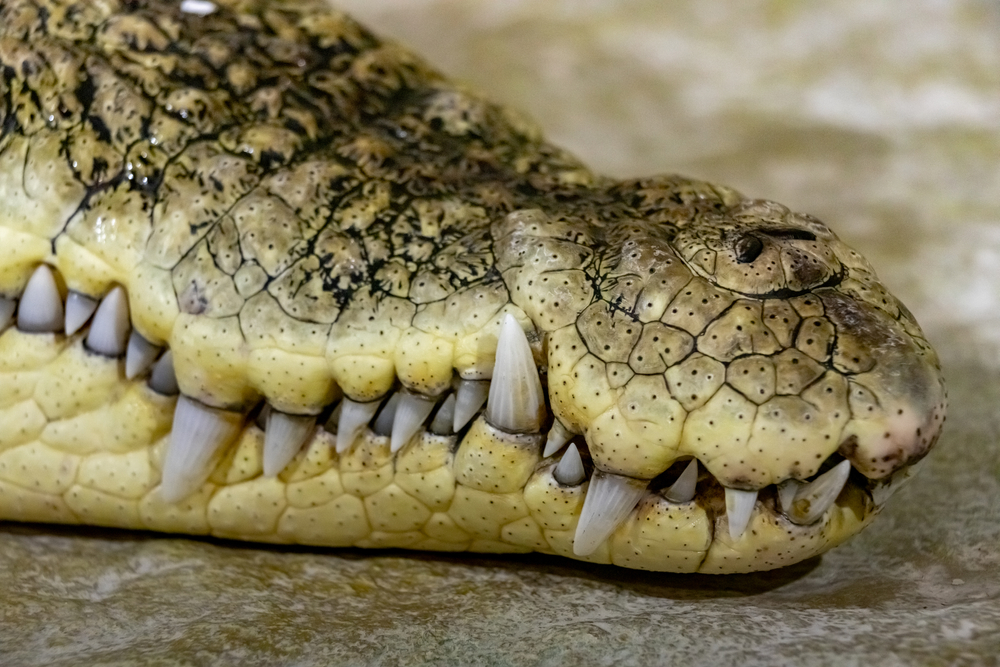
Alligators feature between 74 and 80 teeth in their jaws at any time. Additionally, their body replaces teeth that wear down or fall out throughout their life.
Consequently, the species can go through more than 2,000 teeth during their lifespan.
6. They eat fruits
The last thing you think of when you see an alligator is fruits. These apex predators are typically carnivorous opportunists that dine on amphibians, fish, birds, reptiles, and mammals.
Their size largely determines what they often eat.
Nonetheless, alligators can also use their sizeable jaws to munch on fruits such as elderberries, citrus fruits, and wild grapes directly from trees.
This eating habit enables them to spread these fruits’ seeds throughout their habitats, further helping their ecosystems.
7. Alligators have two walking styles
Aside from swimming, an alligator can crawl, run, and walk on land. These species have two walking styles, including the low and high walks, which you can spot during your trip along the Indian River.
The high walk involves the animal moving with its belly lifted off the ground, whereas it sprawls along the floor during the low walk.
8. They are vocal
These animals have multiple calls to signal different intentions, such as finding mates, signaling distress, threatening rivals, or declaring territories.
Alligators do not have vocal cords but loudly bellow by drawing air into their lungs and blowing it out via intermittent roars. They can also hiss, growl, and produce cough-like sounds referred to as a chumpf.
Is there a difference between an alligator and a crocodile?

Even though you may not spot crocodiles on the Indian River, you can find reports about them in other areas along the Treasure Coast.
For instance, some visitors at Jensen Beach spotted an American saltwater crocodile sunbathing beside a freshwater pond. Crocodiles and alligators belong to the same Crocodilia order and share similar features, including size, appearance, and behavior.
Their similarity typically makes it difficult for travelers to tell the difference when seeing these massive animals.
Nonetheless, the two species incorporate differences to help you distinguish them, letting you instantly identify what you view during your trip along the Florida coast.
Below are some primary ways that an alligator differs from a crocodile:
I. Environment
Crocodiles can reside in fresh and saltwater, with their salt glands enabling them to osmoregulate salty conditions. Alligators cannot live in saline waters and primarily stay in freshwater lakes, swamplands, and low-flow sections of rivers.
Unlike crocodiles, alligators lack the salt glands on their tongue that would enable them to osmoregulate in high salinity places.
Moreover, the two species are cold-blooded yet require a higher temperature to survive. An alligator can live in conditions as low as 79°F, whereas a crocodile can survive in temperatures ranging from 85°F to 93°F.
For this reason, you can find alligators in colder areas, with the northernmost range reaching North Carolina. A crocodile’s northernmost range is the southern tip of Florida.
Hence, it is certainly an alligator if you are in the United States and not in the South Florida region.
II. Receptors on the skin
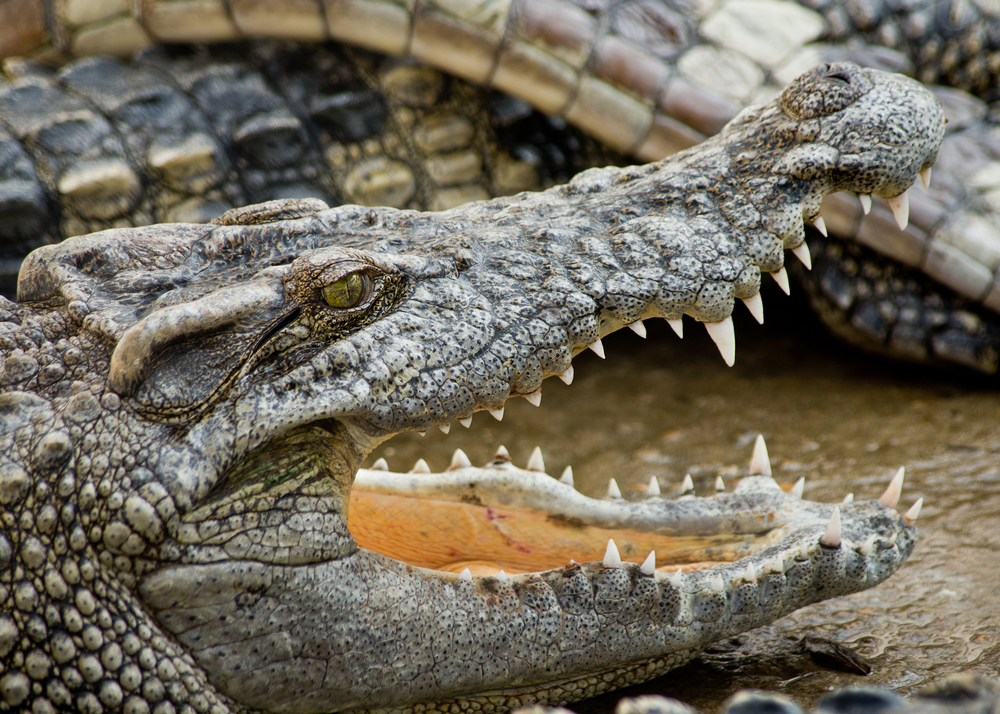
Alligators and crocodiles incorporate dome pressure receptors on their skin, helping them detect water ripples and regulate water pressure when swimming.
You can find these receptors on alligators as tiny black spots near the jaw. On the other hand, crocodiles feature these dome pressure receptors in translucent form and all over their body.
This difference in receptors makes crocodiles better swimmers and residents in open water than alligators.
III. Build
Aside from the receptors on the skin, the two animals have some exterior differences that can make it easier to differentiate them at a glance.
For example, an alligator has a U-shaped snout, whereas a crocodile comes with a V-shaped one. The latter also generally has a bigger body than the alligator, exceeding it by approximately 4 to 6 feet on average.
In addition, the former has a jaw designed for crushing prey rather than tearing, giving it cone-shaped teeth. On the contrary, a crocodile has sharp and pointed teeth made for tearing its prey.
It delivers remarkable bite strength of around 3700 psi, exceeding an alligator’s bite capacity by about 1200 psi.
Besides, alligators come in dark shades such as black or a shiny dark green that can appear almost black in certain lighting.
A crocodile features shades of grey, green, black, or brown with speckled or mottled patterns that aid them in blending in with substrate and algae.
American crocodiles have countershading coloration to blend into the water when hunting, where they have a white to yellow underside against a slate grey body.
IV. Speed
People often say that looks can be deceiving, and this quote rings true for crocodiles and alligators. Although they seem lazy as they bask in the sun, the two species can comfortably outrun a human.
An alligator delivers higher speeds than crocodiles, where the former can reach up to 30-mph rates. In contrast, a crocodile can hit up to approximately 20 mph over a very short distance.
They both lose speed in the water, where an alligator slows to around 25 mph, while the crocodile reduces to 18 mph.
What other species live around the Indian River?
More animal and plant species can be found within the Indian River Lagoon than in other North American estuaries. The brackish waters of the Indian River make it home to different species of migrating and resident animals.
Hence, you can enjoy a quality outing with your family and view the different wildlife present along the inlet and its surrounding habitats.
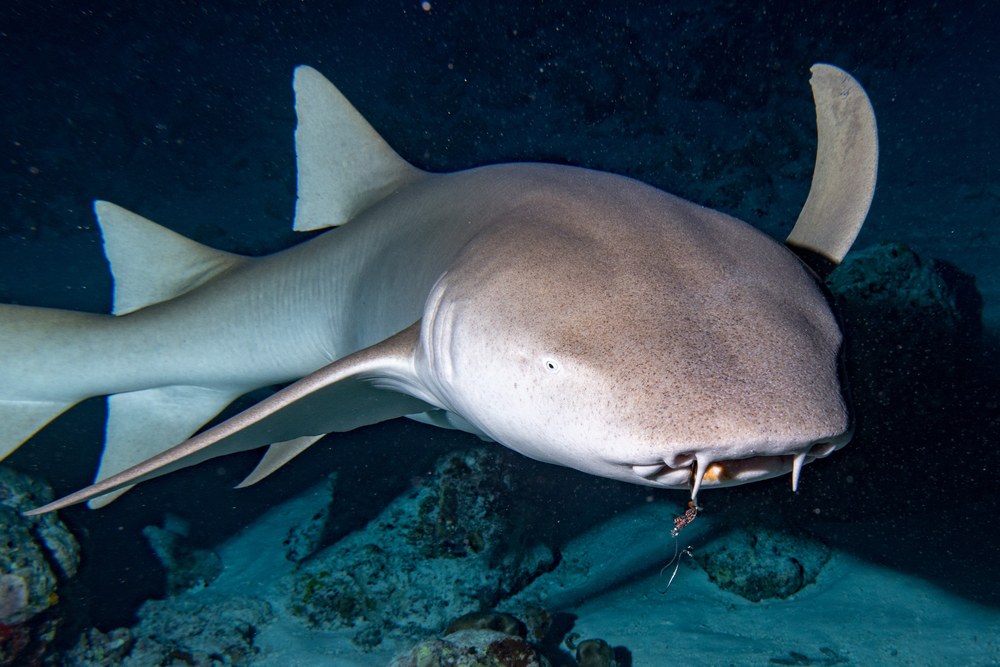
For instance, you can find marine life such as the nurse shark that dwells in the warm, shallow waters of the Indian River Lagoon.
The region is also home to sea turtles, including the Green Sea Turtle and the juvenile Loggerhead Turtle.
Dolphins are the most common species to spot around the coast, lagoon, and river estuary, with their curiosity often leading them to chase boats.
Aside from these, you can see the West Indian Manatees, famous for being voracious eaters. These animals can dine on one-tenth of their body weight within a day and spend 8 hours per day eating aquatic plants.
Bird lovers can spot Snowy Egrets, Great Blue herons, Roseate spoonbills, and brown pelicans during their visit along the Indian River and lagoon.
What activities can you do at the Indian River Lagoon?
The Indian River and the surrounding lagoon system offer plenty of activities to enjoy whether you travel alone or with family, friends, or colleagues.
You can enjoy a relaxing trip with loved ones or alone via fishing excursions along the lagoon, from the Indian River to the Banana River.
Booking a charter is the ideal option when you want to fish around the Mosquito Lagoon. Apart from fishing excursions, you can appreciate riverfront dining with family via the quality restaurants lining the Indian River Lagoon shoreline.
The Indian River Lagoon also offers boat and kayak rentals to ensure you can partake in active and adventurous tours.
You can find motorboats or paddles to ride the waves and brackish waters in style, creating unique and memorable moments on the Florida Coast.
In addition, paddling when standing or sitting down lets you get a nice workout as you explore and tour the scenic waters.
If you voyage with kids to the Indian River, you can ride eco-tours that allow you to have an up-close and personal experience with the site’s wildlife.
You can get quality pictures of the alligators without compromising your safety while learning more about the habitats via educational guides.
Additionally, these tours are available year-round, ensuring you can have an unforgettable experience at any time.

